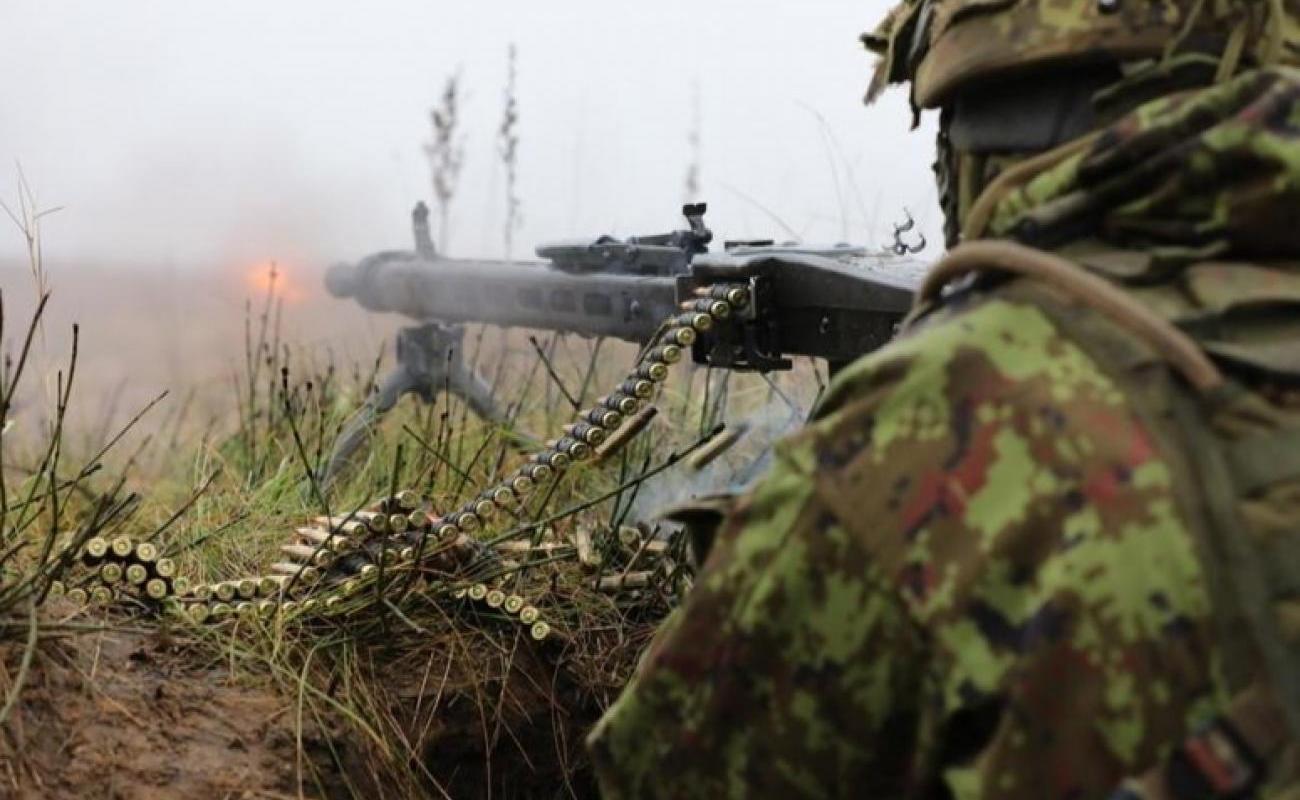Estonia to build 600 bunkers along Russian border

Estonia will build hundreds of bunkers on its border with Russia under new plans to create a "Baltic defense line" to strengthen regional security. On Friday an agreement was signed by the three Baltic states to construct "anti-mobility defensive installations" in the coming years.
Defense ministers from Estonia, Latvia, and Lithuania signed the agreement in Riga.
They approved the concept of building "anti-mobility defensive installations" on their borders with Russia and Belarus, a statement from the Estonian Ministry of Defense said.
In peacetime, no explosives, cutting wires, or other obstacles will be placed on the border of Estonia, the ministry said. Instead, a network of bunkers, support points, and distribution lines will be established.
In the coming years, they will be used to deter and, if necessary, defend against military threats.
The plans are based on the decisions made at the NATO Madrid Summit in 2023 which emphasized that Allies must be ready to defend the territory from the first meter. New regional defense plans must also be developed.
The Baltic countries are one area of operations, and so defense installations will be built in coordination with Latvia and Lithuania.
Minister of Defense Hanno Pevkur (Reform) said this is a "carefully considered and thought-out project" that has arisen due to the current security threat.
"Russia's war in Ukraine has shown that, in addition to equipment, ammunition, and manpower, physical defensive installations on the border are also needed to defend Estonia from the first meter," said Pevkur.
He emphasized that the purpose of defense installations is to prevent a military conflict in our region.
"We are undertaking this effort so that the people of Estonia can feel safe, but if the slightest risk emerged, we would be ready for various developments more promptly," the minister added.
The building process will be carried out in cooperation with local communities and with the agreement of landowners. The price of defense facilities is initially estimated at €60 million.
Kaido Tiitus, adviser to the deputy secretary general at the Ministry of Defense for Defense Readiness, told ERR the ministry has been dealing with the issue since the second half of 2023.
"In peacetime conditions, as much as possible is built but it is not possible to build everything in peacetime," said Tiitus.
For example, in peacetime, mines, barbed cutters, and so-called dragon's teeth will not placed in the defense zone, but they will be stored nearby so they can be quickly installed.
Bunkers building is expected to start in early 2025, but as part of the line is on private land negotiations with owners need to take place first. Discussions about compensation also need to be had.
"There is a big question mark over selling land in south-east Estonia, for example, because people there do not want to sell land, the land is important to them, whether it has some kind of traditional value or whether it's purely farmland that keeps people's souls alive in that far corner of the country. Buying it up is certainly not a good solution for them," said Tiitus.
He emphasized the bunkers could also be used in peacetime and they will not be designed as eyesores or to disrupt everyday life.
It is estimated one bunker could hold one platoon of soldiers, that is, about 10 people in an area of 35 square meters.
Col. Tarmo Kundla, head of the Estonian Defense Forces (EDF) General Staff's operations department, said the design is still being finalized. However, one requirement is that they can be erected quickly and easily.
"The wish is for these bunkers to be modular so that they are easy to transport and easy to assemble," said Kundla.
Defenses increase attack cost, give longer warning
Col. Kundla said the aim is to stop the opponent's attack at the very beginning.
"There is no such thing as an impenetrable defense, but the price an adversary has to invest to penetrate that defense is still significantly higher than he would have to pay now. Also, the preparations that he will have to make to break through that line of defense are much more visible to us than what is the case now. Perhaps the opponent's preparation will also work as a forewarning for us," said Kundla.
He added that there are no plans to build bunkers on the coast to protect the sea border.
"We're trying to build maritime security a bit differently. To do this we are getting missiles and we have bought naval mines. And obviously in the big picture, so to speak, everything that we've been planning is also part of that broader defense," said Kundla.
The final number of concrete bunkers to be built is yet to be determined, but the Ministry of Defense and the Defense Forces estimate around 600 will be needed, Postimees reported. They must withstand a direct hit from a 152 mm caliber projectile.
